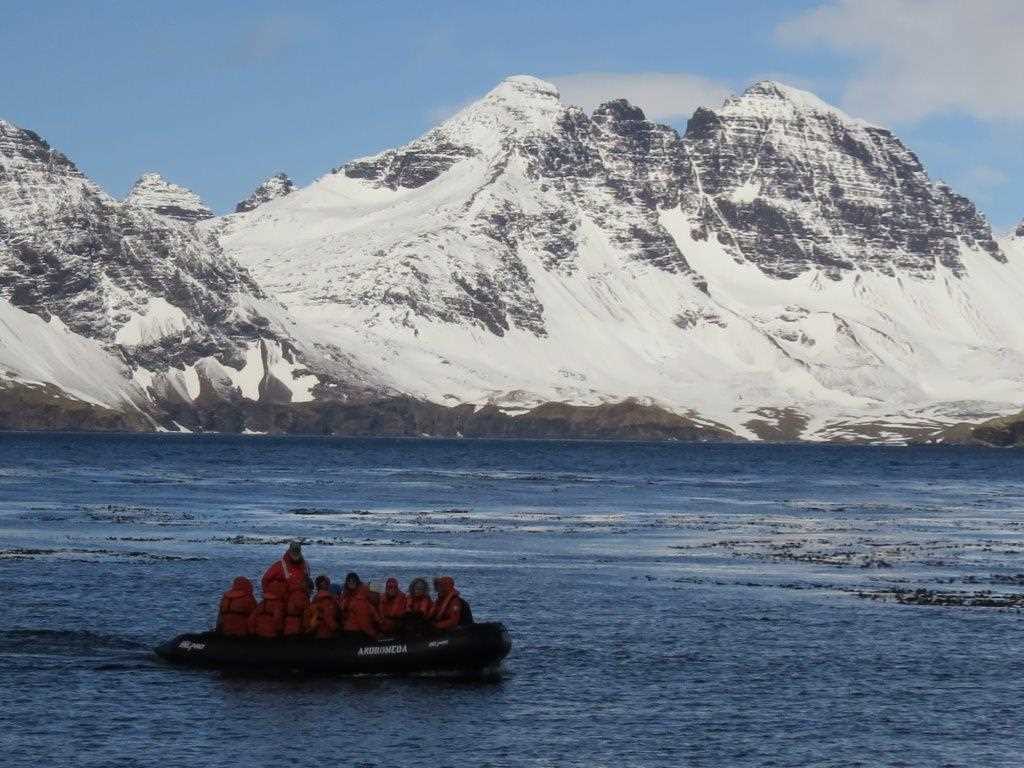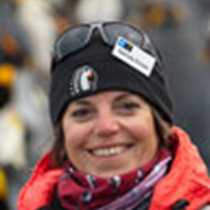During the night, fresh snow accumulated on deck while the National Geographic Orion stayed anchored at King Haakon Bay, on the western shores of South Georgia. The soothing silence of snow falling at sunrise was disrupted by the party of intrepid trekkers preparing to disembark and begin the crossing of the island, attempting to emulate the efforts of Ernest Shackleton and his companions in May 1916. The modern and colourful alpine gear gathered for this adventure bore little resemblance to the meagre adze, rope and crampons made from nails that ‘The Boss’ and his men had one hundred years ago, but the spirit of comradery and venture is similar.
Once the trekkers were on their way we set sail northeast, cruising around the northern tip of South Georgia. Calm seas followed us and the blue sky revealed the picturesque silhouette of this mountainous island: white peaks, green slopes and grey cobblestone beaches. The excitement grows among us: Humpback whales have been spotted from the comfort of the lounge and we are eager to see more of the wildlife that inhabits these latitudes.
After lunch we reach Prion Island, a small island on the Bay of Isles. This site has been rat-free prior the pest eradication efforts of the local government, and therefore, it has remained in pristine ecological condition. Prion Island is covered in tussac grass, and the east and west coast cliffs are optimal breeding grounds for the wandering albatross.
The small landing beach is an overload to the senses: there are male, female and elephant seal pups covering the beach while male fur seals keep a close eye of each other. Amidst the raucous and barking sounds of the seals, the call of the South Georgia pipit is highly noticeable. King penguins come ashore for a look and Gentoo penguins are busy choosing the perfect site for a nest. It’s all happening in front of our eyes!
It is up on top of the island where we find the wandering albatrosses and there is a boardwalk to allow visitors to climb the steep slopes without trampling the vegetation. There were no footprints yet on the snowy boardwalk, it feels a privilege to be among the first visitors of the season. While ascending, we can see the majestic profile of the wandering albatross in flight, gliding above us. At the viewing platform we spot a nest with a large albatross chick and its parent. The chick has a few clumps of down hanging from its chest and is groaning to the adult for food. It will take another six to eight weeks for this chick to be fully fledged and leave the nest; until then, it will depend on both parents for feeding. Giant petrels, white-chinned petrels and skuas are keeping us mesmerized looking at the sky, but none compare to the wandering albatross. Their graceful and almost effortless flight combined with the largest wingspan of all birds (11.5 ft.) make these ocean-bound birds a wonderful sight.
Live from South Georgia—watch on Facebook!
Look for us live on Facebook from one of this island's enormous king penguin colonies! We'll chat with our National Geographic photographer and some of our staff and guests as we explore one of Earth's greatest wildlife spectacles. Follow us on Facebook to see it live!







